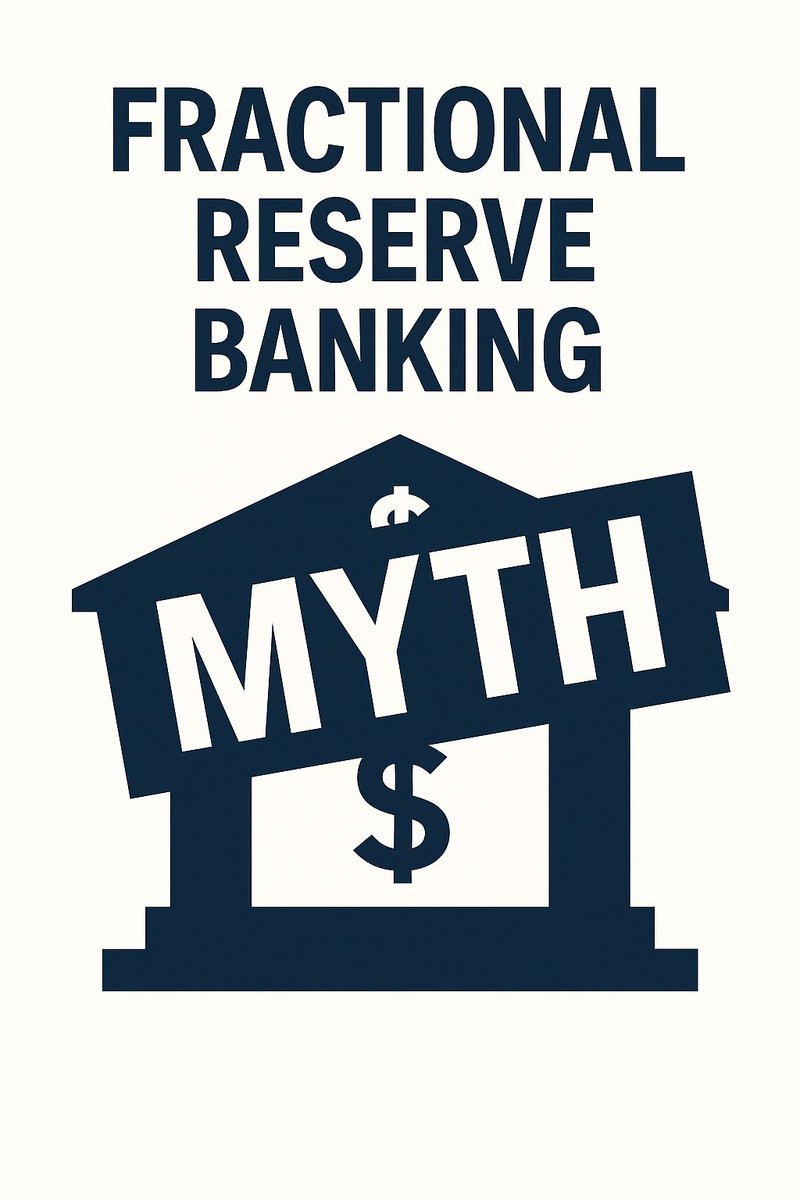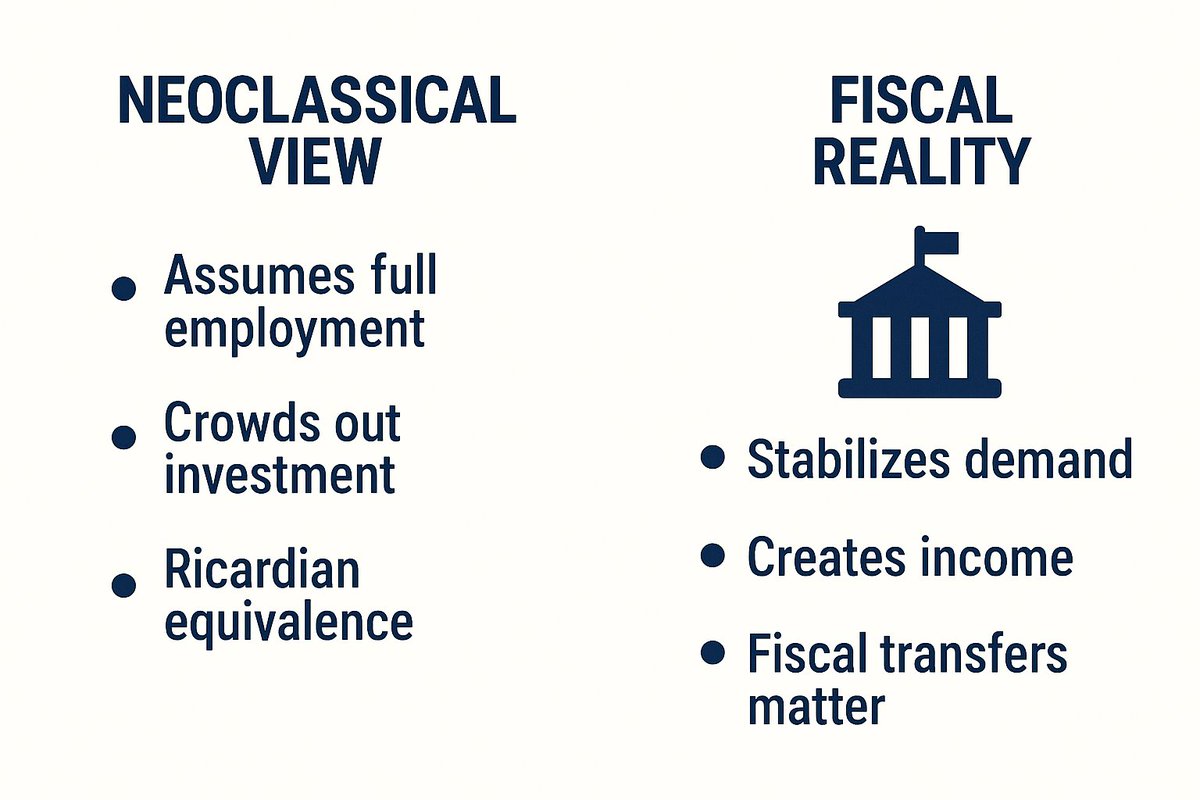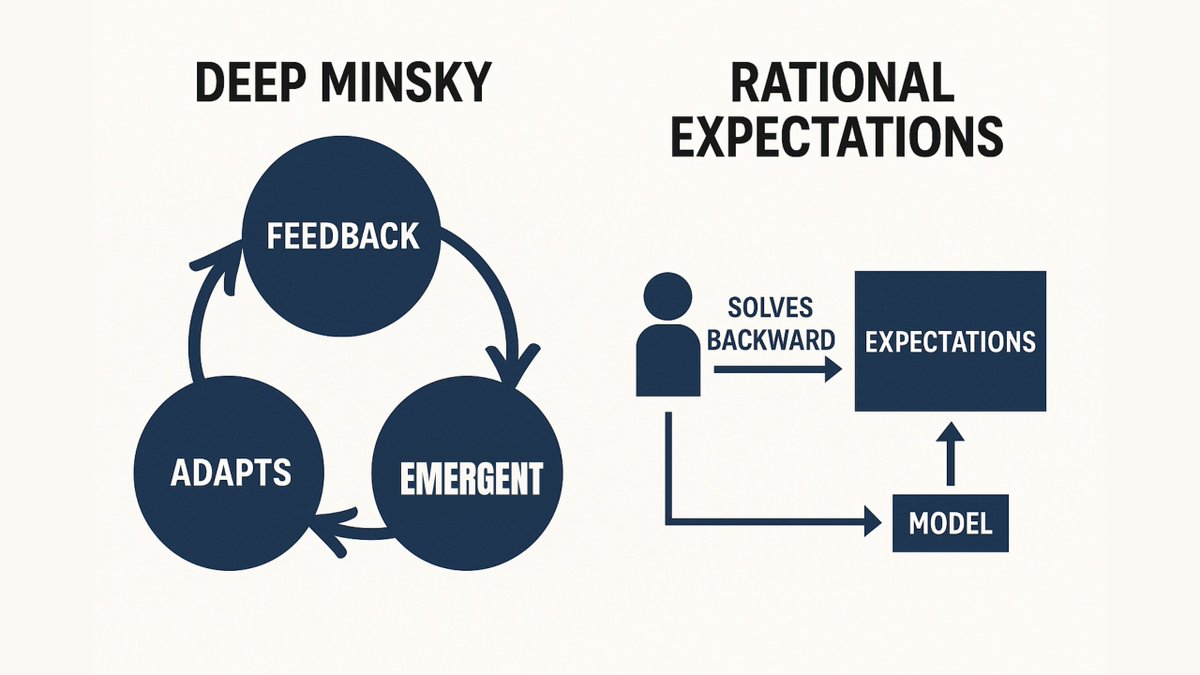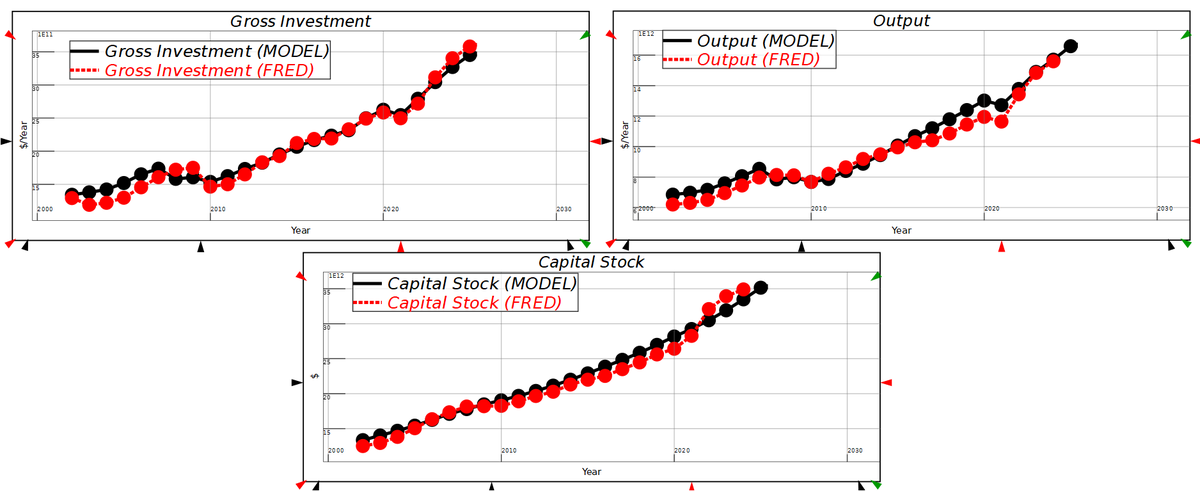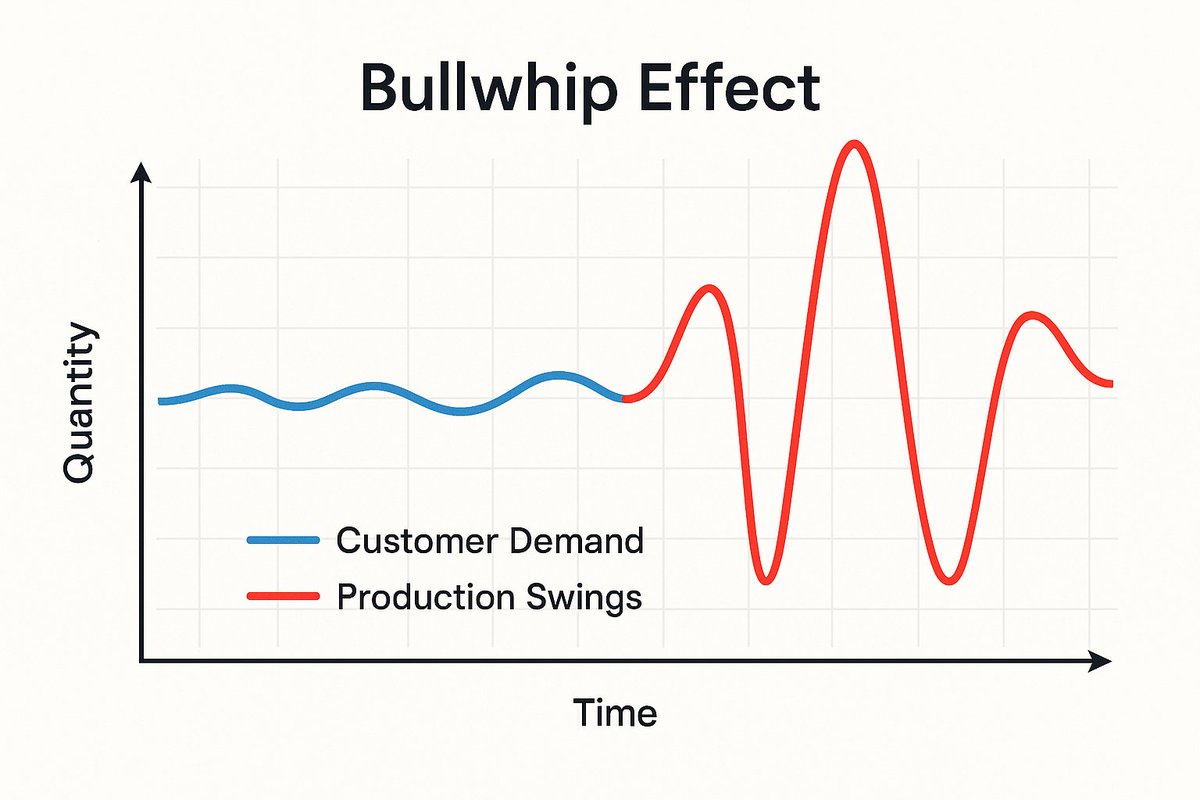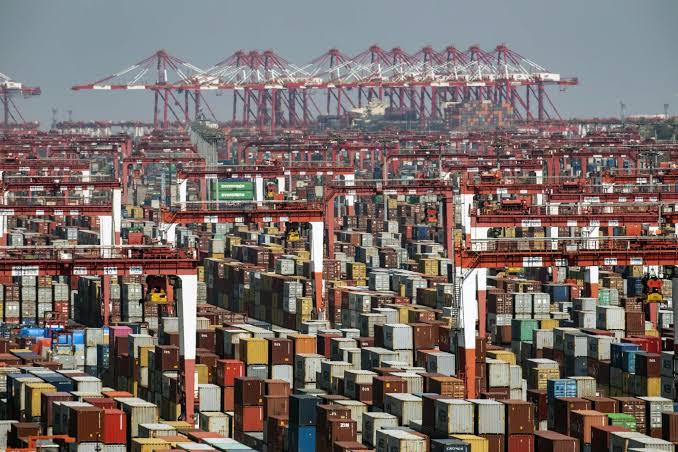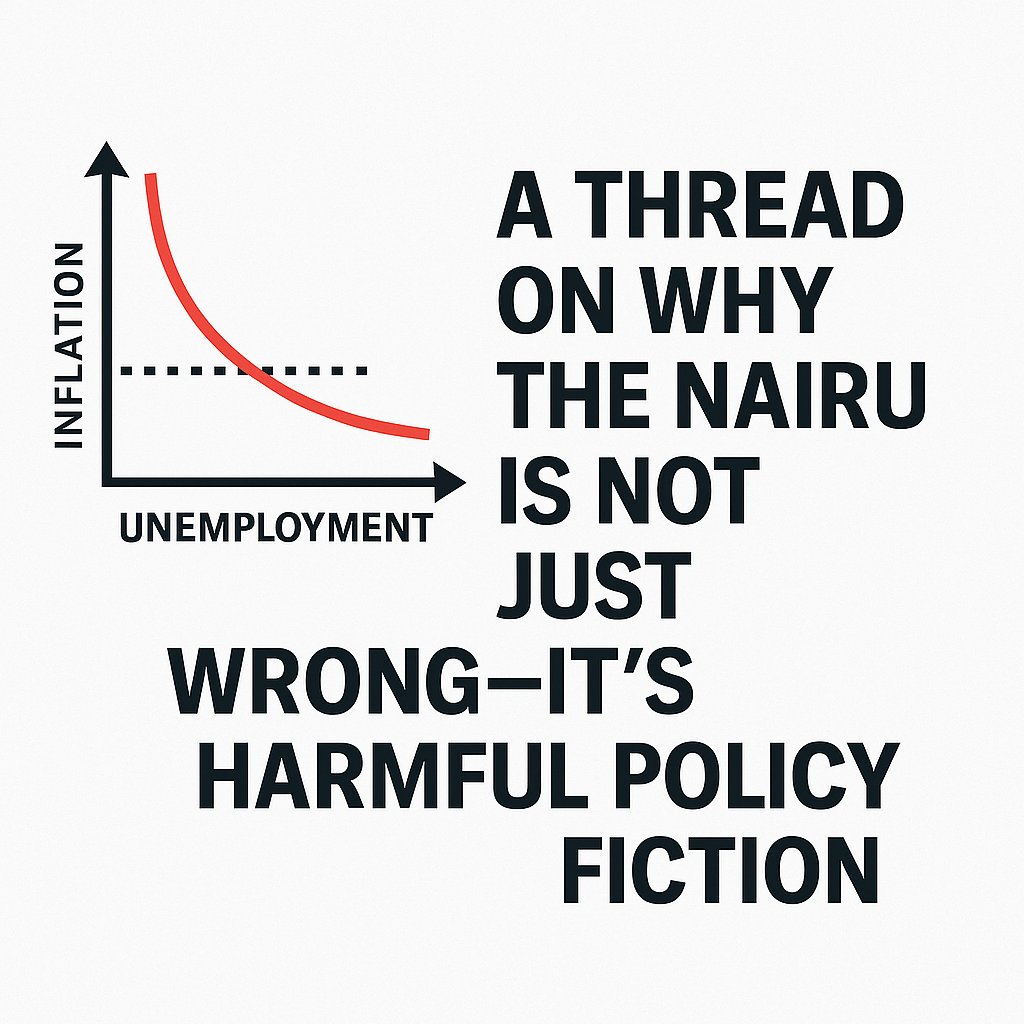Mainstream econ says:
Households save → banks lend savings → firms invest.
Robinson flipped it: investment comes first, savings follow.
Once you see how money & banking work, it’s hard to unsee.
🧵1/10
Households save → banks lend savings → firms invest.
Robinson flipped it: investment comes first, savings follow.
Once you see how money & banking work, it’s hard to unsee.
🧵1/10
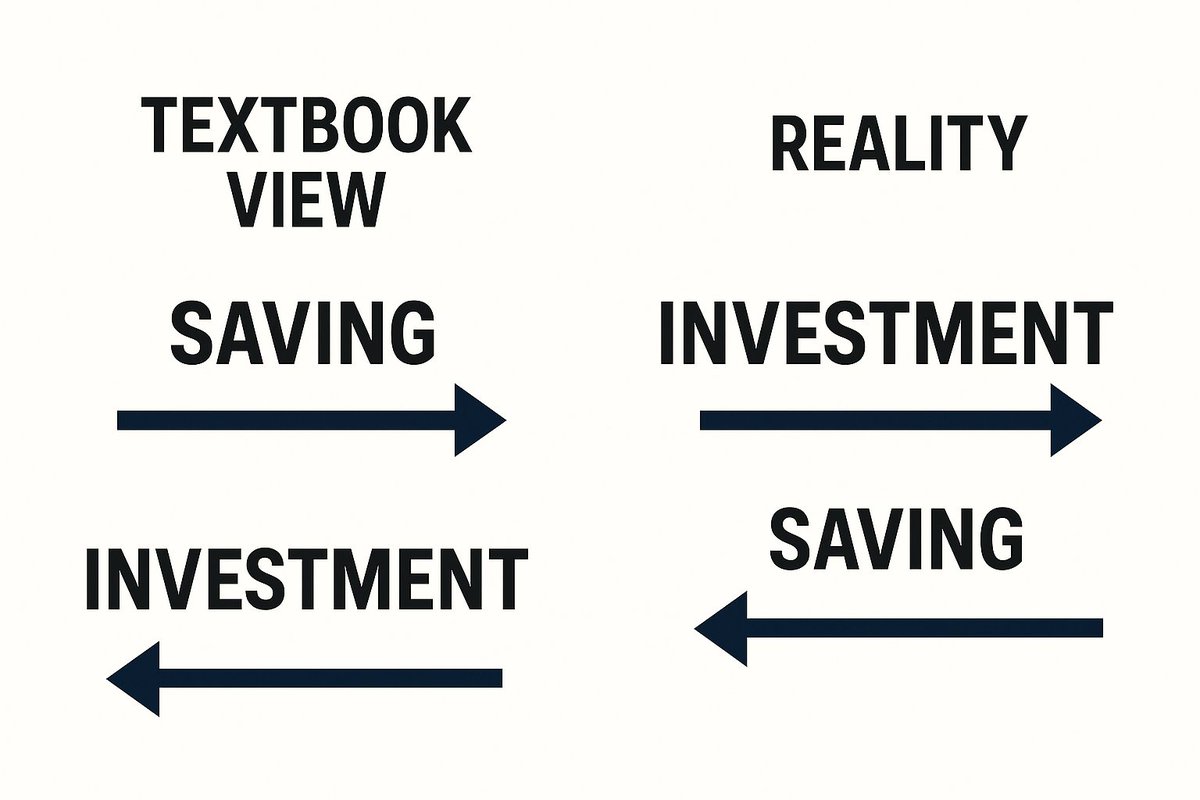
The Goodwin growth cycle shows it:
Investment drives output & jobs → higher employment boosts wages → rising wages can squeeze profits → investment slows → cycle repeats.
It starts with investment decisions, not household savings.
🧵2/10
Investment drives output & jobs → higher employment boosts wages → rising wages can squeeze profits → investment slows → cycle repeats.
It starts with investment decisions, not household savings.
🧵2/10
So where does the money for investment come from?
Not from a “pool” of prior savings.
Modern banks create credit.
When they lend, they create deposits, new money instantly funding investment.
🧵3/10
Not from a “pool” of prior savings.
Modern banks create credit.
When they lend, they create deposits, new money instantly funding investment.
🧵3/10
Firms borrow → spend → raise output & incomes.
Only after incomes rise does saving appear in the data.
In national accounts, investment = saving — but causality runs from investment to saving, not the other way.
🧵4/10
Only after incomes rise does saving appear in the data.
In national accounts, investment = saving — but causality runs from investment to saving, not the other way.
🧵4/10
If households save more by spending less, firms sell less.
Lower sales → lower profits → less investment.
Without another source of demand (govt deficits, exports), higher saving today can actually reduce investment.
🧵5/10
Lower sales → lower profits → less investment.
Without another source of demand (govt deficits, exports), higher saving today can actually reduce investment.
🧵5/10
Keen’s extensions to Goodwin add private debt:
Firms invest if profitable demand is there.
If profits aren’t enough, they borrow, banks create the credit they need.
Again: credit & investment lead; savings follow.
🧵6/10
Firms invest if profitable demand is there.
If profits aren’t enough, they borrow, banks create the credit they need.
Again: credit & investment lead; savings follow.
🧵6/10
Policy flip:
If you want more investment, don’t push for more saving first.
Give firms reasons to invest & ensure credit supply.
The saving will happen automatically as a byproduct of higher incomes.
🧵7/10
If you want more investment, don’t push for more saving first.
Give firms reasons to invest & ensure credit supply.
The saving will happen automatically as a byproduct of higher incomes.
🧵7/10
If households cut spending & no one else fills the gap, the cycle reverses:
Investment slows → incomes stagnate → savings vanish.
High saving without offsetting demand is self-defeating.
🧵8/10
Investment slows → incomes stagnate → savings vanish.
High saving without offsetting demand is self-defeating.
🧵8/10
In a credit-creating economy, investment is the engine.
Savings are just the shadow it casts.
Robinson’s line isn’t just rhetoric, it’s a basic truth about how monetary economies work.
🧵9/10
Savings are just the shadow it casts.
Robinson’s line isn’t just rhetoric, it’s a basic truth about how monetary economies work.
🧵9/10
We should stop designing policy as if savings are the fuel for growth.
Investment decisions, backed by a banking system that can create credit, come first.
📖 Full blog here →
🧵10/10
patreon.com/posts/investme…
Investment decisions, backed by a banking system that can create credit, come first.
📖 Full blog here →
🧵10/10
patreon.com/posts/investme…
• • •
Missing some Tweet in this thread? You can try to
force a refresh



